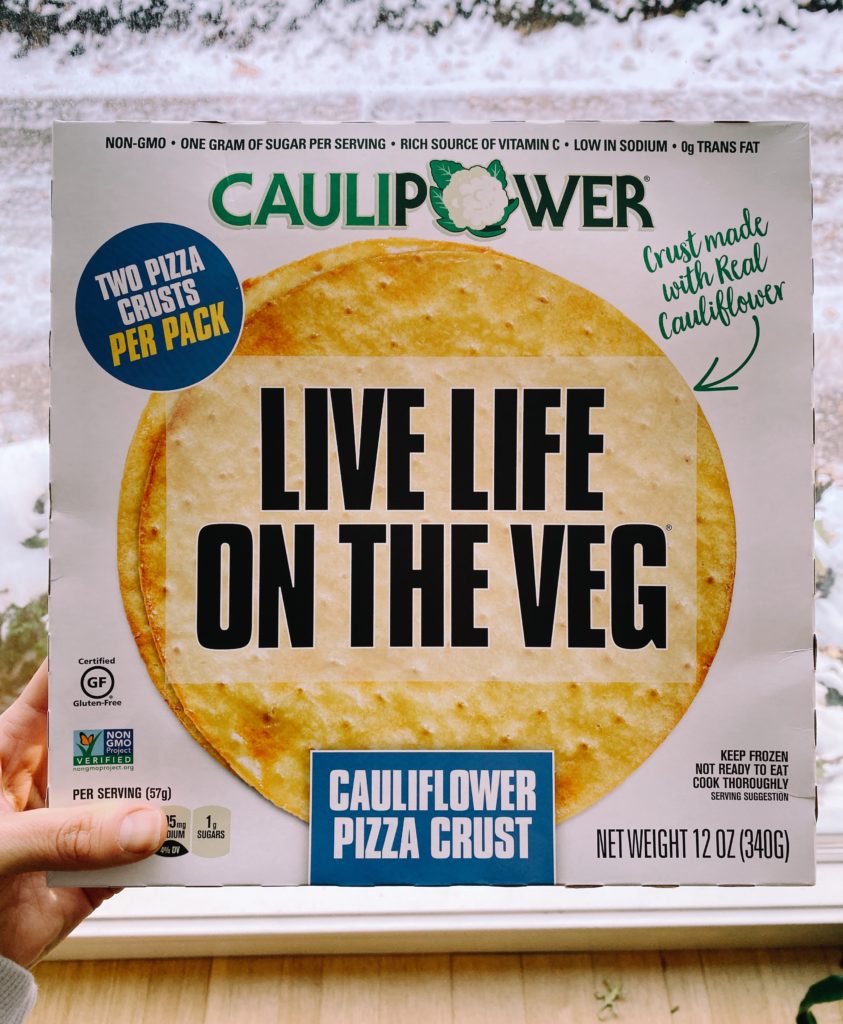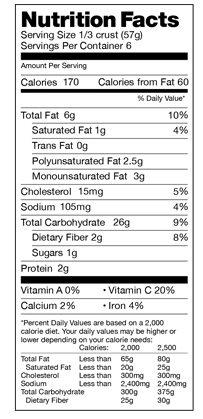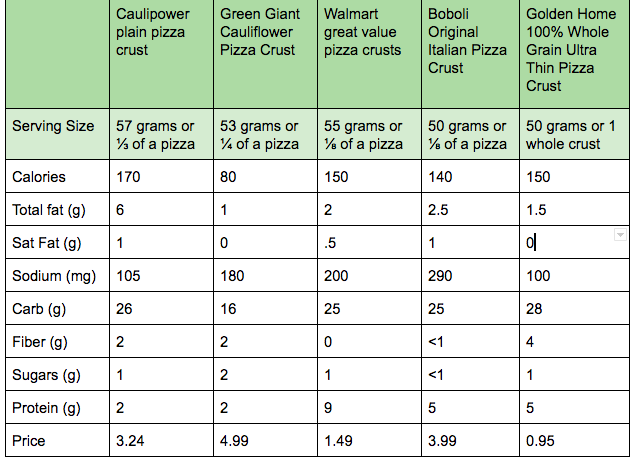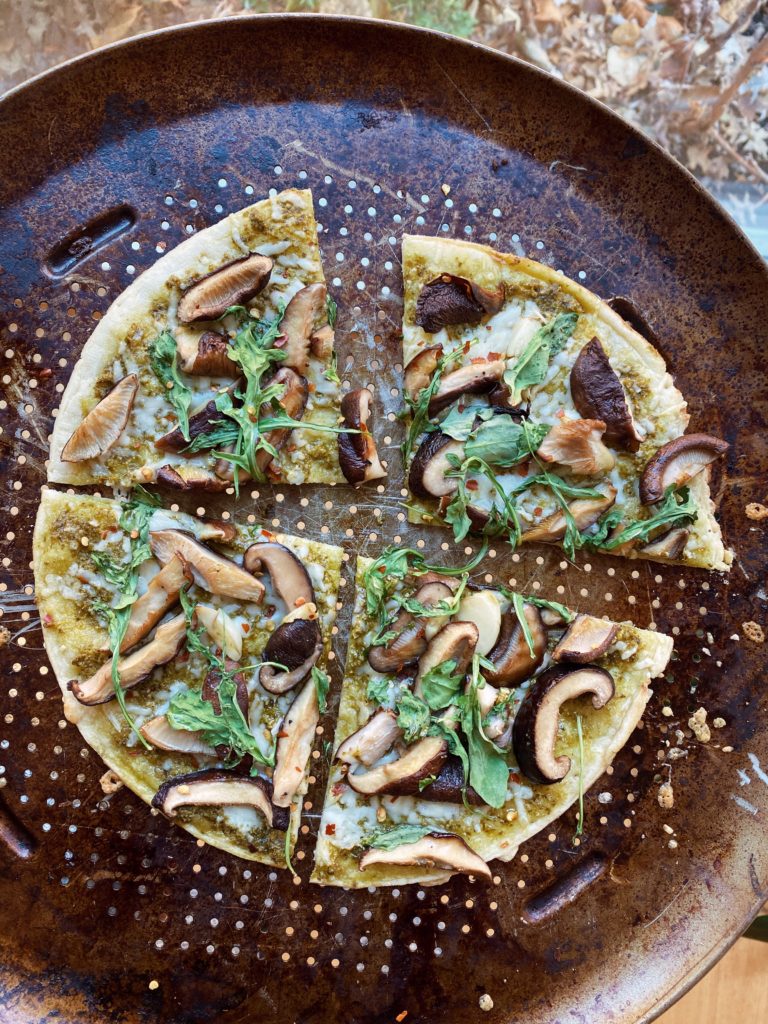Welcome to “McDaniel’s Bite-Sized Reviews” | Caulipower Pizza Crusts
It’s a weekly series we’re calling “McDaniel’s Bite-Sized Reviews!” Every other week, we’ll share a popular food, drink or supplement one of our MNT Registered Dietitians tried, reviewed and rated. With the growing number products on the grocery store shelves, figuring out which items are getting you the most nutritional bang for your buck can feel overwhelming? Our hope is that we can make grocery shopping at least 0.5% easier!
FYI – these posts aren’t sponsored. They are opinions of unpaid tastebuds.
Check Out Our Past Reviews:
- Week One: Banza Elbow Pasta Made with Chickpeas
- Week Two: Lifeway ProBugs Organic Pouches
- Week Three: Sports Research Collagen Peptides
- Week Four: Lúvo Planted Power Bowls
- Week Five: Kodiak Power Cakes Flapjack & Waffle Mix: Buttermilk
- Week Six: Beyond Meat Burger
- Week Seven: Litehouse Cilantro Greek Yogurt Dressing
- Week Eight: Clif Whole Lotta Bars
- Week Nine: Hippeas Organic Chickpea Puffs
- Week Ten: Cauliflower Crackers
- Week Eleven: Happy Inside Cereal for Digestive Health
- Week Twelve: PROBAR Live
- Week Thirteen: Popcorners
- Week Fourteen: Dave’s Killer Breads Rockin’ English Muffins
- Week Fifteen: Smart Sweets
- Week Sixteen: Jif Power Ups Peanut Butter Creamy Clusters
- Week Seventeen: Garden Lite Muffins
What are Caulipower Pizza Crusts?
Caulipower pizza crusts are crusts made with cauliflower as the first ingredient. You can purchase the crust alone, or with a variety of different toppings such as veggies, pepperoni, and tomatoes and mozzarella.
The company states: “Everything CAULIPOWER starts with real cauliflower first and is naturally gluten-free. They’re an excellent source of Vitamin C with no, nil, zero trans fat. Our pizzas have less than half the sugar of leading gluten-free pizzas (less than half!) and are lower in calories, sugar, fat, and sodium. They’re also higher in protein, fiber, and vitamins than most traditional and gluten-free pizzas, while being naturally nutrient-rich. And they’re delicious. Seriously.”
Why Did We Try Caulipower Pizza Crust?
Cauliflower pizza crusts are growing in popularity with dozens of brands now attempting to make the perfect cauliflower crust. This is, perhaps in response to the low carb movement. Or, I prefer, pro-vegetable movement. Not only can you find a growing number of these products in your grocery, you’ll also see them when you eat out. Here in St. Louis, you can find them at Pieology, MOD Pizza, and California Pizza Kitchen. We wanted to know, while they’re popular, are they actually more healthy than a standard pizza crust? How many servings of pizza crust = a serving of actual cauliflower?
Caulipower: How Many Stars?
Our 5 Star Rating
Taste: 5/5 stars
If you wouldn’t have told me the first ingredient in this crust was cauliflower. I wouldn’t have known. It had a thin crust feel, but still toasted, flakey and the right amount of chew. Delish.

Nutrient Density: 3/5

We compared Caulipower Pizza Crusts to a few other cauliflower pizza crusts and a few regular pizza crusts so we could get a better look at how the nutritional value compares. Although the Caulipower Pizza crusts incorporate vegetables into the crust, they end up having similar calorie and carbohydrate values as the other brands. As for fiber, the Golden Home 100% Whole Grain pizza takes that award.
Now…if we compare this pizza crust to cauliflower; for 170 calories of cauliflower (6 cups of cooked cauli) you would get 3 grams of fat, 30 grams of carb, 20 grams of fiber and 14 grams of protein. I wouldn’t care to eat that much cauliflower in one setting, but it’s clear to see eating the real deal gets you more bang for your nutritional buck. And, while information on phytochemicals or antioxidants isn’t measured in pizza crust, I’m pretty confident in saying, you lose the majority of these health-protective properties when you turn cauliflower into a crust.

Value: 3/5
The Caulipower Pizza crusts isn’t totally out of range in comparison to the other cauli crusts. But, it does cost significantly more in comparison the flour variety.
Average Rating: 3.7/5
Where To Find Caulipower Pizza Crusts
You can find this product at Schnucks, Walmart, Dierbergs, Target, and Costco. Trader Joe’s does have their own brand of a very similar pizza as well in their freezer section.
How We Enjoyed Caulipower Pizza Crusts
A pizza crust is only as healthy as the company it keeps. So, we topped ours with pesto, roasted shiitake mushrooms, arugula & parmesan cheese.


